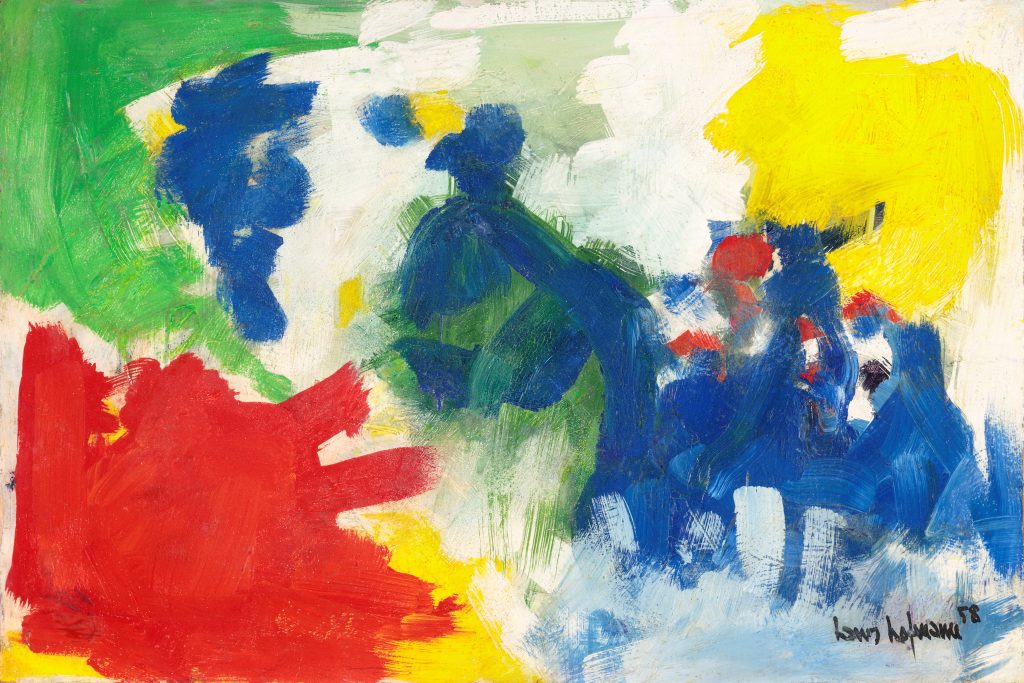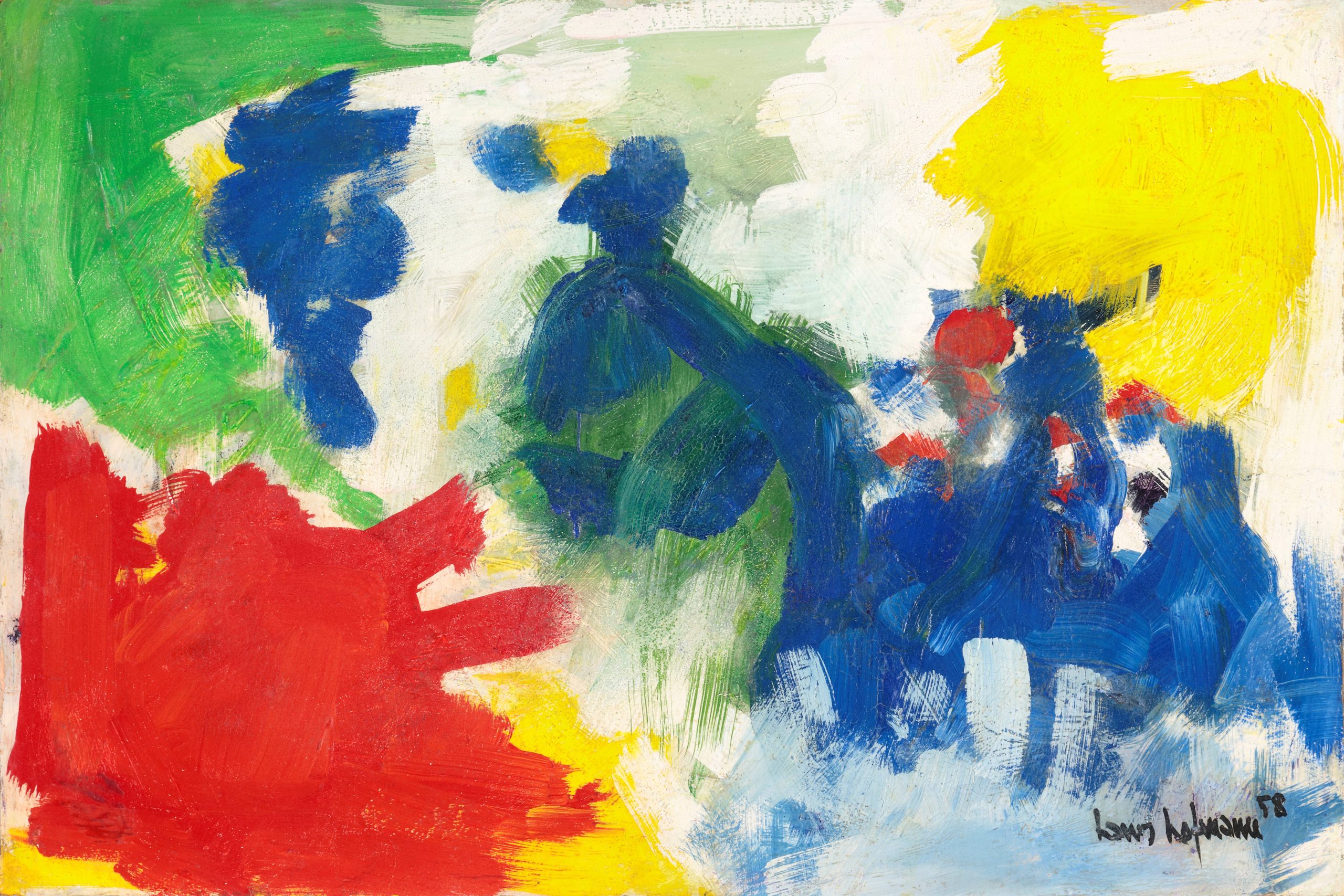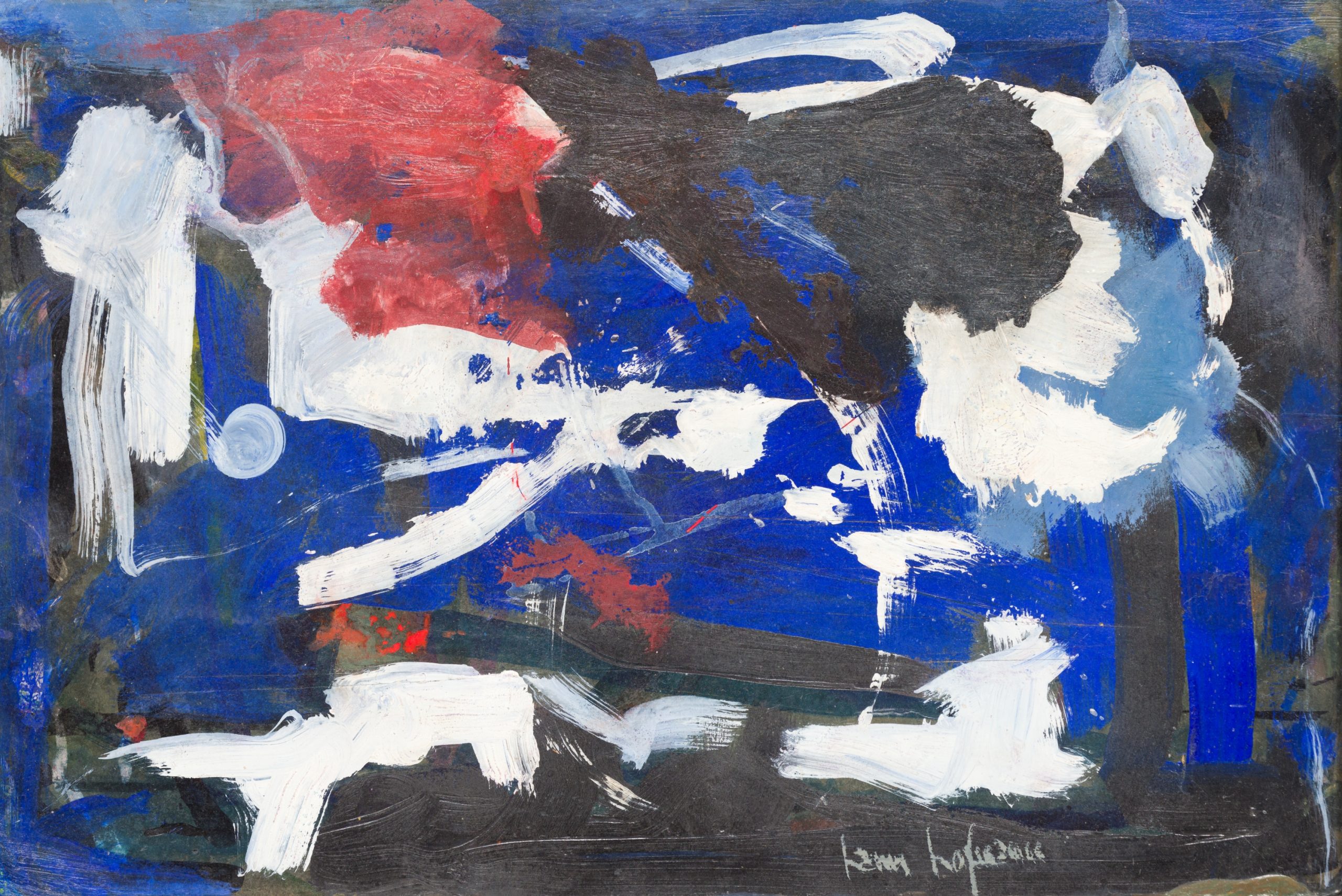Hans Hofmann was born in the German region of Bavaria in 1880. Growing up near Munich, he attended art school in Paris and was active in European avant-garde art circles during the first part of the twentieth century. His peers at the time included Pablo Picasso, Henri Matisse, Georges Braque, Gertrude Stein, and Sonia Delaunay. In 1915, he established what many consider to be the first modern art school, among his students were sculptor Louise Nevelson. He organized summer sessions across Europe, training dozens of artists, and furthered the reputation of his art school as the most important training center for artists in Central Europe. His own painting of this time consisted of figurative works inspired by the developments in art put forth by the Cezanne and the Cubists. In the 1930s for a significant period of time, he devoted his artistic practice exclusively to drawing, returning to painting in 1940.
After an invitation to teach a summer session at UC Berkeley, Hofmann emigrated to the United States in 1932. In 1933, he began teaching at the Art Students League in Manhattan, and the following year he reopened his art school in New York, becoming one of the most respected art teachers in the U.S. A long list of his American students included Lee Krasner, Helen Frankenthaler, Joan Mitchell, Ray Eames, Erle Loran, Glenn Wessels, John Haley, and Marisol Escobar.
Hofmann held his first solo exhibition in New York at Peggy Guggenheim’s Art of This Century gallery in 1944. Critics, including Clement Greenberg, argued that the gestural work included in the exhibition was a precursor to the Abstract Expressionist movement. Retrospectives at the Whitney Museum of American Art in 1957 and at the Museum of Modern Art in 1963 established Hofmann as a leading figure in the international abstract art movement. He became widely known for his “push and pull” method, which he taught throughout the U.S. and Europe, and recorded in theoretical writings that were translated from German. This method of painting emphasized that the structure of a composition, including illusions to depth and volume, could be achieved through color, shapes, and the build of the surface rather than representational forms, focusing instead on the “tension” between the various forces of the picture plane.
Hoffman’s works can be found in the collections of the Metropolitan Museum of Art, Museum of Modern Art, New York, Tate Modern, Baltimore Museum of Art, National Gallery of Art, and Walker Art Center, Detroit Institute of Art, Art Institute of Chicago, Denver Art Museum, and San Francisco Museum of Art, among others.



